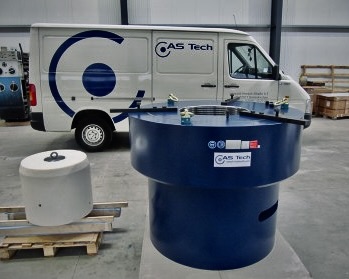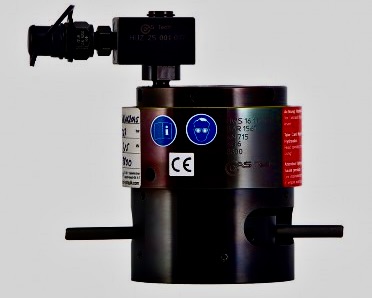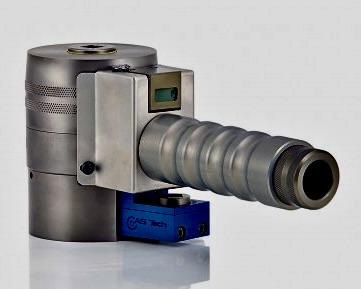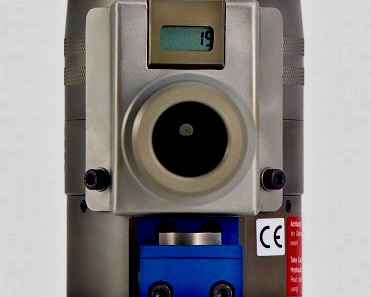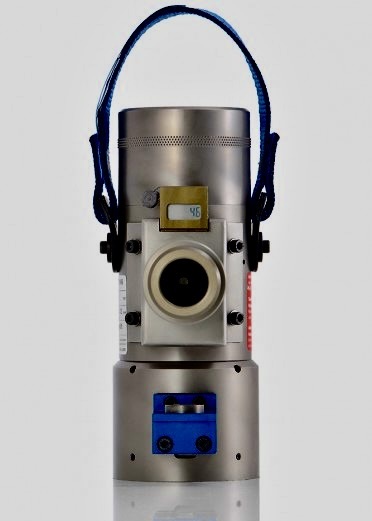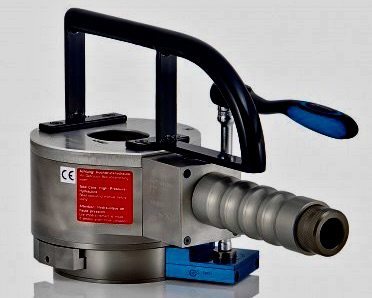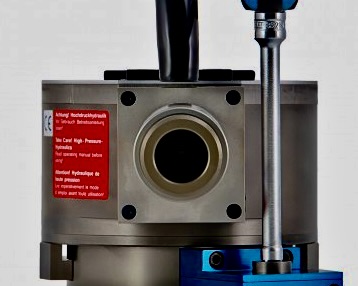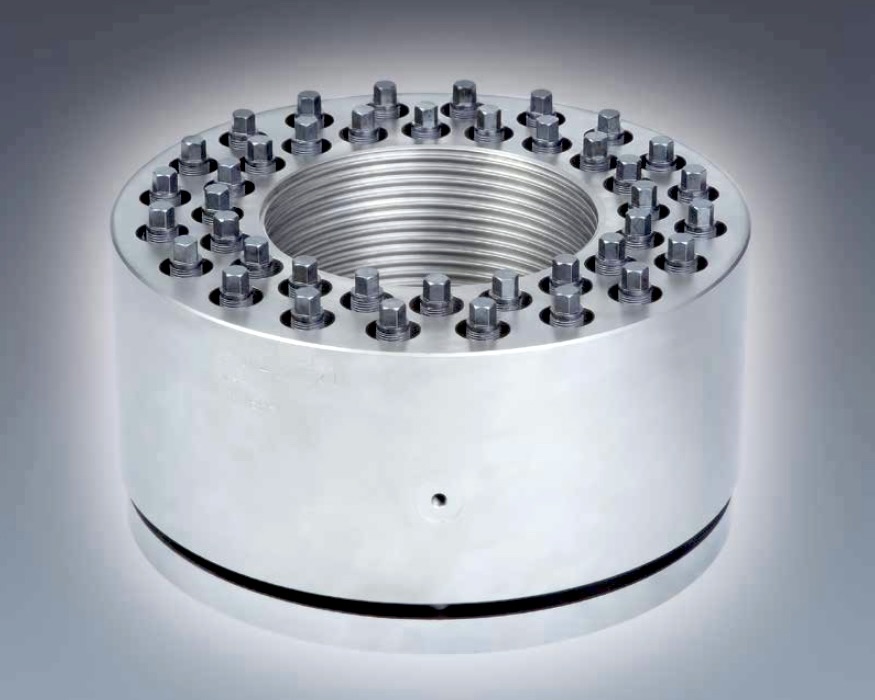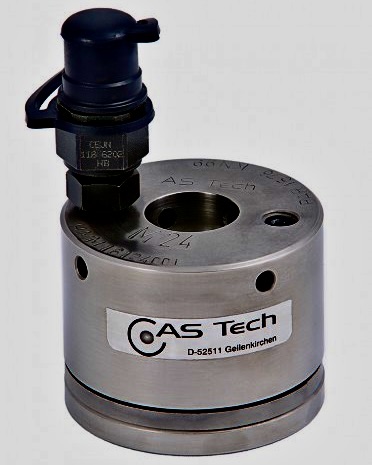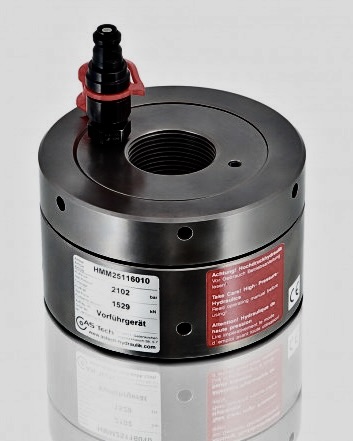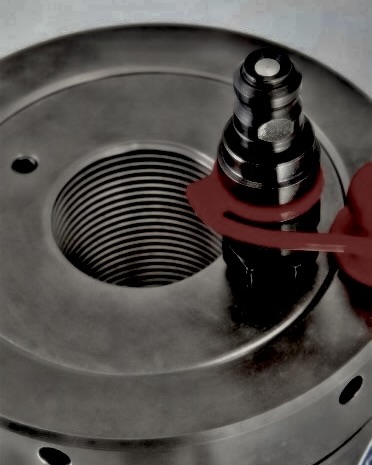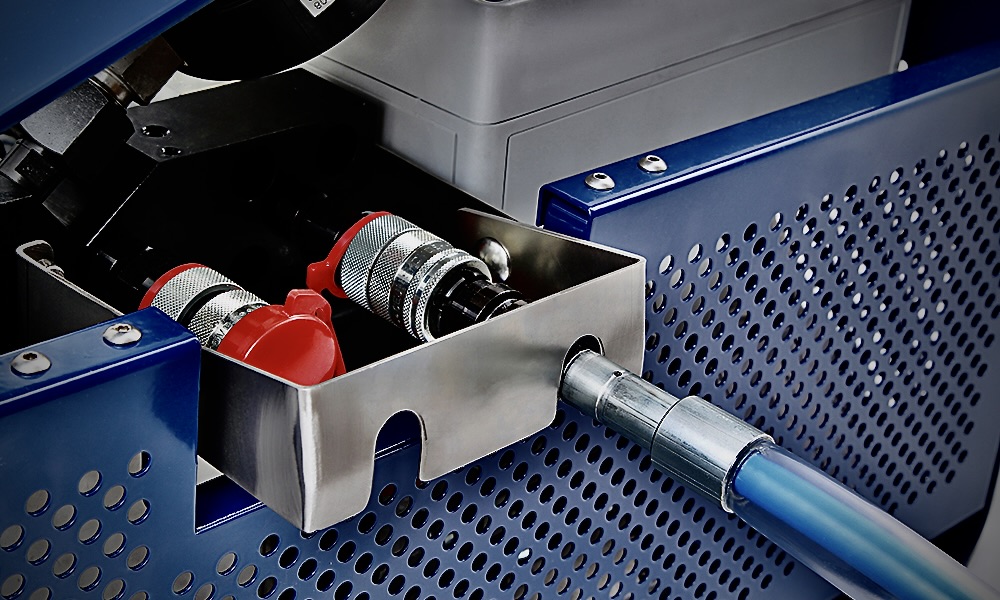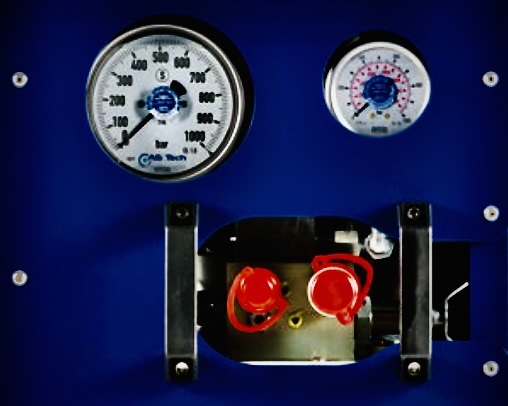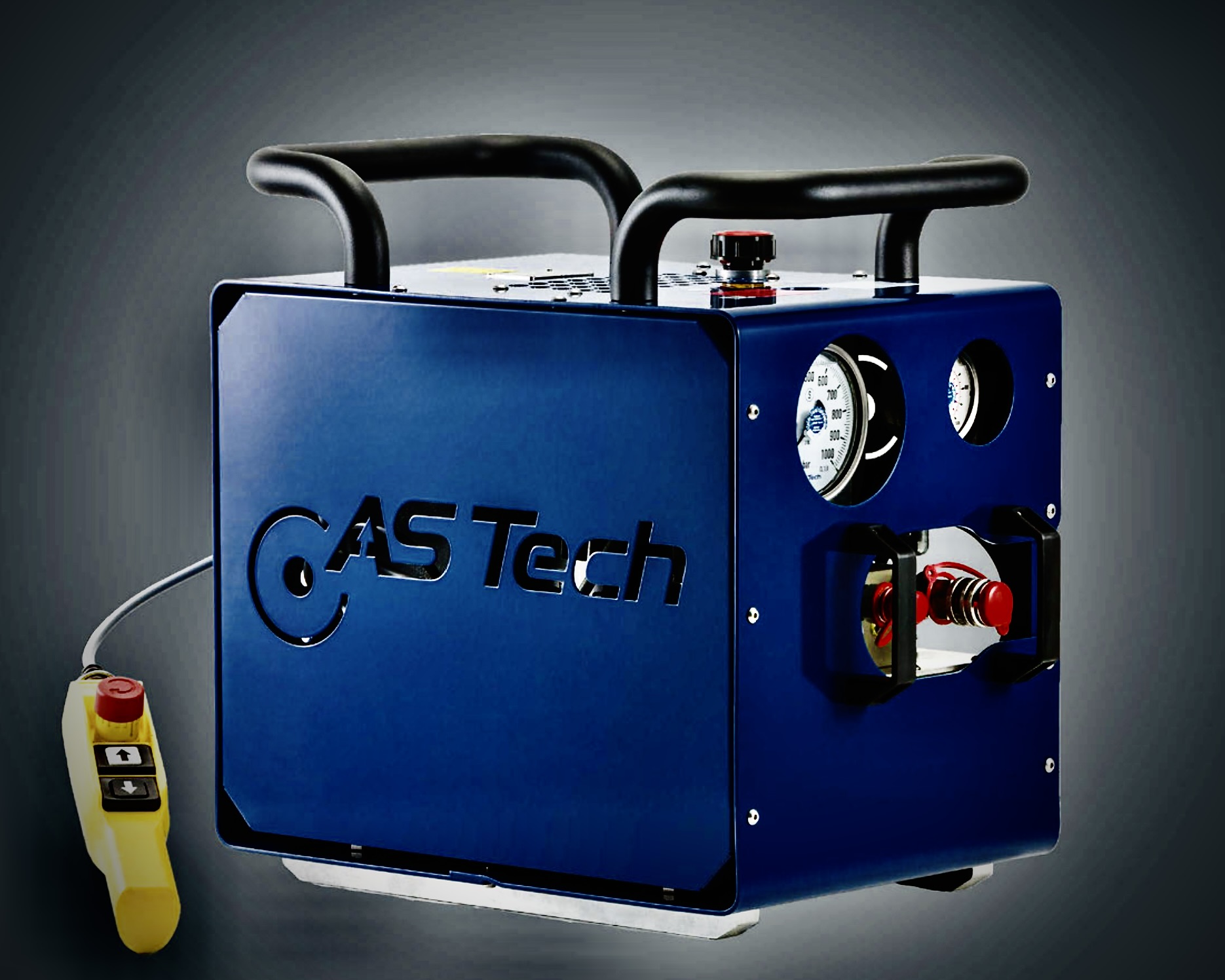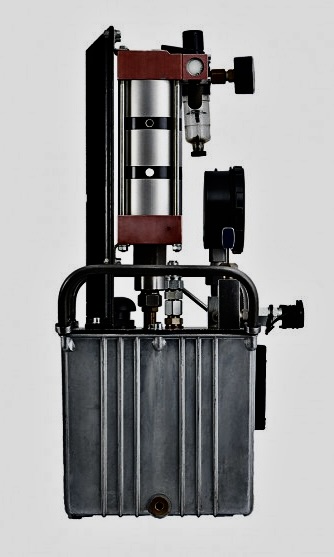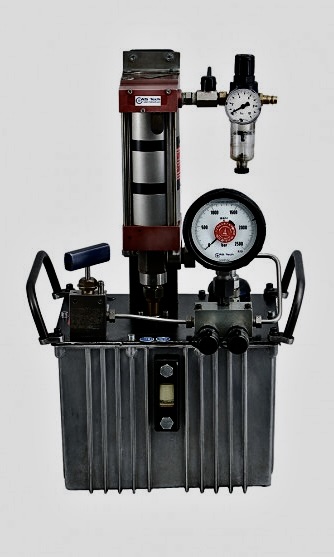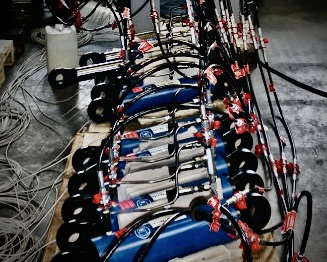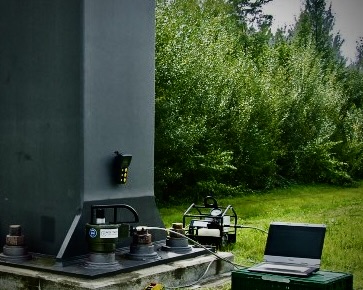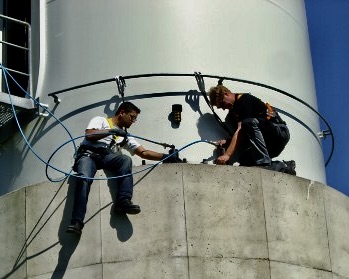
AXIAL BOLTING
Axial bolting facilitates uniform force application and higher fastening accuracy. The bolting process yields torsion- and friction-free operation by monitoring the bolt tensioning device as well as the hydraulic nut. The working principles of axial bolting encompass the use of multiple identical bolts that are tightened securely and efficiently.
The force, calculated in the connection design in order—the retainer nut and then the device—is screwed onto the threaded end to be clamped. By means of hydraulic pressure, the force is introduced to the pump; the application of the force occurs independently from the connection length. Subsequently, the pre-tensioning force is calculated. Once the required pressure is reached, the retaining nut is tightened to the threaded connection. The device can be removed and placed on the next bolt.
Bolt tensioners allow controlled tightening in pursuit of generating stress. The force is produced and applied without torsion, acting in the axial direction of the bolt. Since this is also done without friction and the nut can be turned without any friction, calculating the coefficient of friction is unnecessary.
Hydraulic nuts can be used for bearing mounting, rotating components, or hard-to-reach bolts. The tool is primarily used in applications that require fast assembly and disassembly. Depending on the working condition, hydraulic nuts can be used for permanent pressure application, mechanical locking, or temporary pressurisation. Hydraulic nuts treat machine parts more gently as clamping and pre-tensioning forces are enforced without friction.
SINGLE-STAGE BOLT TENSIONER WITH THREADED PULLER
One of the many distinct qualities of this bolt tensioner line is its low profile. On top of that, the single-bolt tensioning device is low-cost and, thus, has a short payback period. This device is widely used for a multitude of industrial applications.
SINGLE-STAGE BOLT TENSIONER WITH EXCHANGEABLE NUT

The exchangeable tension nut bears considerable resemblance to a hydraulic cylinder, as it comprises multiple supplementary sets, an assembly tool for bolts, and general engineering nuts. It is highly cost-effective, as the exchangeability of the nut allows a diverse application for machines and tools of different thread sizes.

HWS 16 573 XXX | MULTI-STAGE BOLT TENSIONER WITH EXCHANGEABLE NUT
The multi-stage bolt tensioner is used to generate high prestressing forces using a small outside diameter. This tool is mainly used in the field of turbines, large bearings, and pumps.

HWS 16 283 XXX | AUTOMATIC BOLT TENSIONER
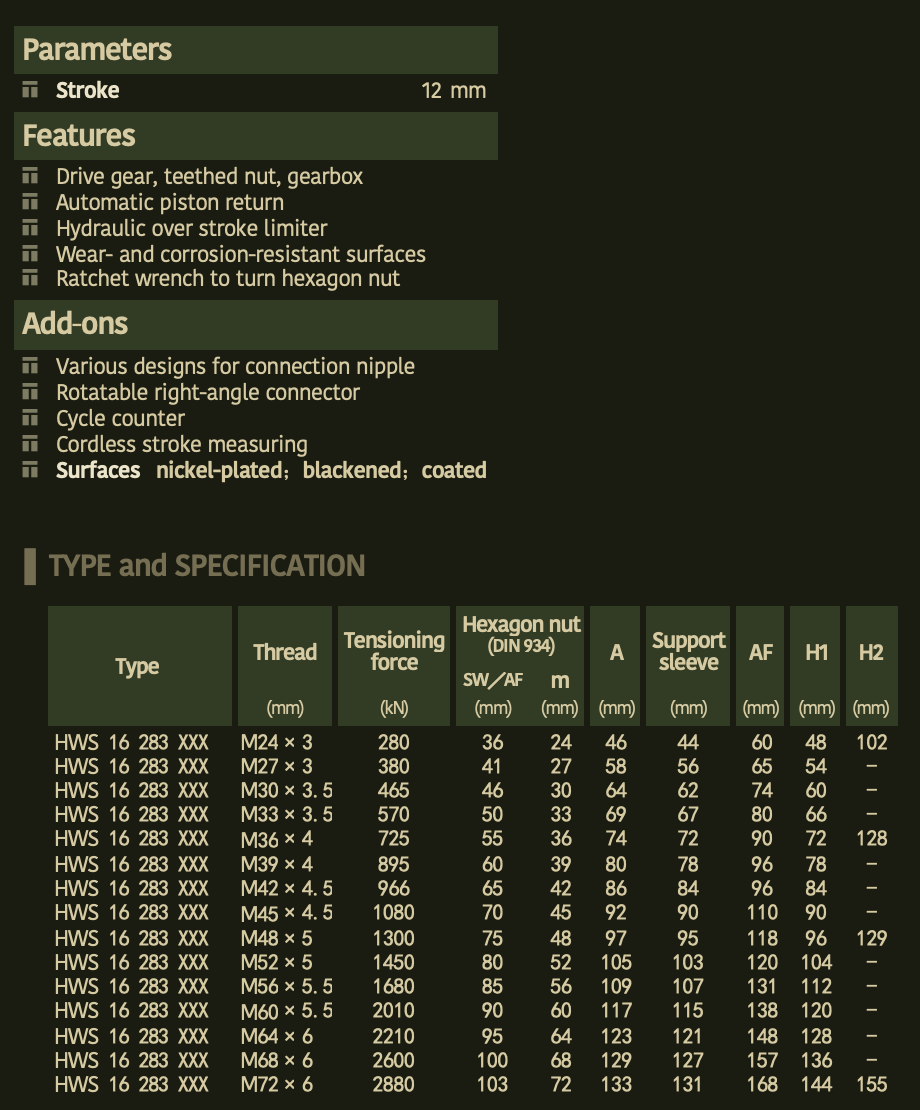
MMM XX 121 XXX | MECHANICAL BOLT TENSIONING NUT

CLAMPING STROKE DEPENDENT NUT WITH SPACER PLATE
The hydraulic nut consists essentially of an internally threaded cylinder, a piston, and a split spacer plate. The hydraulic nut will be pressurised up to the desired pre-tensioning force. This creates a gap between the piston and cylinder, corresponding to the elongation and compression of the components. In this calculated gap, the corresponding spacer plate will be inserted. Then the pressure can be released.
This design is particularly used for bolt connections that don’t need to be pre-tensioned again for a long period of time or if the elongation of the bolts and the compression of the components to be tightened are known and do not need to be pre-tensioned again. The advantages of this type of hydraulic nut are its simple and inexpensive design as well as its operational phase, which is independent of leakages.

CLAMPING STROKE INDEPENDENT NUT WITH LOCKING NUT
The hydraulic nut comprises an internally and externally threaded piston, a cylinder, and a locking nut. The hydraulic nut can be pressurised up to the desired pre-tensioning force. This creates a gap between the locking nut and cylinder, corresponding to the elongation and compression of the components. The locking nut will be screwed against the cylinder. Then the pressure can be released.
In the machinery sector, the pre-tensioning forces on bolt connections must remain for a few days, or if the elongation of the bolt connections, the compression of the components to be tightened, or the assembly lots are not exactly known, they must, if necessary, be pre-tensioned again. If identical bolt connections, for example, on presses, must be pre-tightened with the same force, the different setting losses in the connection do not need to be taken care of because, by fastening the locking nut, different gap magnitudes can be eliminated. Furthermore, this type of hydraulic nut is suitable for retrofitting machines that have not been hydraulically or axially pre-tightened yet. This version finds its application in bearing and shaft assembly as well. The advantages of this design are the easy and safe handling of the hydraulic nut, the low overall installation time, and the inspection of the remaining pre-tensioning force. Leakage of the sealing system does not affect the operational phase. If it is necessary to retighten a bolt connection, one would only need to fasten the locking nut after applying the desired pressure again. For connections with high stiffness (spring characteristic curve), it is advisable to secure the locking nut against loosening.
CLAMPING STROKE INDEPENDENT NUT WITH NEEDLE SHUT-OFF VALVE
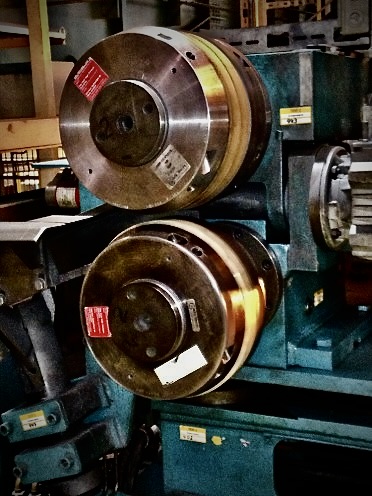
The hydraulic nut consists essentially of a piston, a cylinder, and an integrated needle shut-off valve. The hydraulic nut is pressured up to the desired pre-tensioning force while the needle shut-off valve is open. The parts to be tensioned are now fixed. The introduced pressure is locked by closing the needle shut-off valve. Afterwards, the pressure at the hydraulic aggregate can be released. This design is used when machine parts have to be clamped or positioned. It is particularly suitable for the clamping of rotating components that must be replaced in a short time. Frequently used applications are machine tools, cutting, straightening, cropping, and sanding machines.
The advantages of this design are the simple operating work, the small size, and the fast replacement time of the machine components. With the appropriate sensors (BomAS), pressure monitoring during the operational phase can also take place if they are included in the control circuit (emergency stop or shutdown).

CLAMPING STROKE INDEPENDENT NUT WITH TEMPORARY PRESSURE APPLICATION
The hydraulic nut consists essentially of a piston and a cylinder. Through a temporary pressure application, a force in the nut’s axial direction will be generated. Thereby, clamping- or lateral-movement forces can be temporarily generated. This design is applied during the assembly of bearings or hubs.
ZMM 00 006 XXX | AUTOMATIC JAM NUT

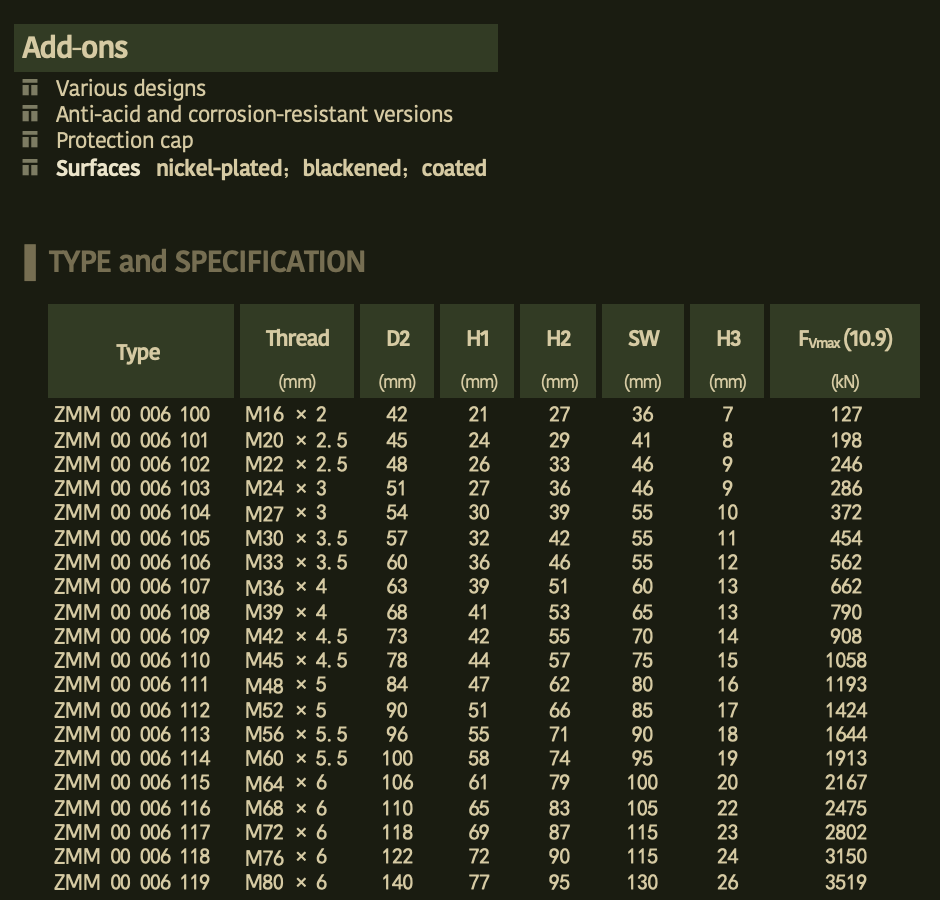
PUMP
The generation of hydraulic pressure is necessary to use AS Tech tools. AS Tech offers three pump series, from very light and compact hand-lever pumps via air-driven units up to electro-hydraulic pumps. It is possible to choose between different pressure ranges up to 2500 bar. AS Tech pressure intensifiers allow the application of low-pressure hydraulic pumps or hydraulic power units for hydraulic torque wrenches.

HDP 16 106 XXX | HAND-LEVER PUMP
The HDP 16 106 XXX hand-lever pump series is primarily suitable for operating small devices or for use during repair and maintenance. As the product is to be operated manually, an external power supply is not required. The hand-lever pumps come with a pressure gauge, which significantly shortens the connection coupling process. The switch-over from LP to HP is also completely automated with the HDP 16 106 XXX series. For such a large hand-lever force, the product is particularly lightweight and easy-to-use. Although the design of the AS Tech hand-lever pumps is considerably unsophisticated, the attention to details of necessary product functions, such as the firmly mounted hose, corroborates the high-quality AS Tech firmly stands by.

EDP 07 400 002 | ELECTRICAL HYDRAULIC POWER UNIT FOR TORQUE WRENCHES
AS Tech electro-hydraulic power units have been developed for all common hydraulic torque wrenches. The units are ideally suited for continuous operation with the active recirculation cooling system. Due to the compact and ergonomic design that includes the support frame, safe and comfortable screwing is made possible.

AIR-HYDRAULIC POWER UNIT
MEASURING–MONITORING–DOCUMENTATION
AS Tech documentation system (BodAS) and monitoring system (BomAS) are suitable for measuring and documenting bolted connections as well as hydraulic pressures. With specially developed software and appropriate hardware, complete non-stop system solutions are provided.

CONTACT US FOR CUSTOMISED MEASURING SYSTEMS
BodAS | DOCUMENTATION SYSTEM

BomAS | MONITORING SYSTEM



